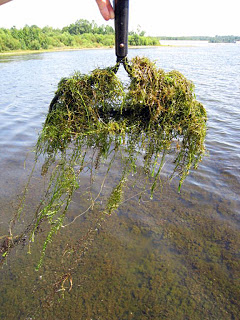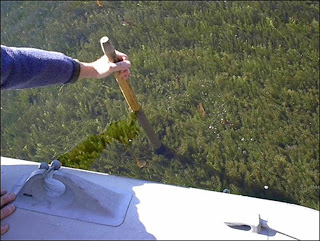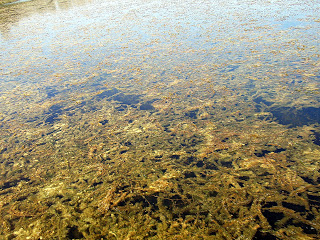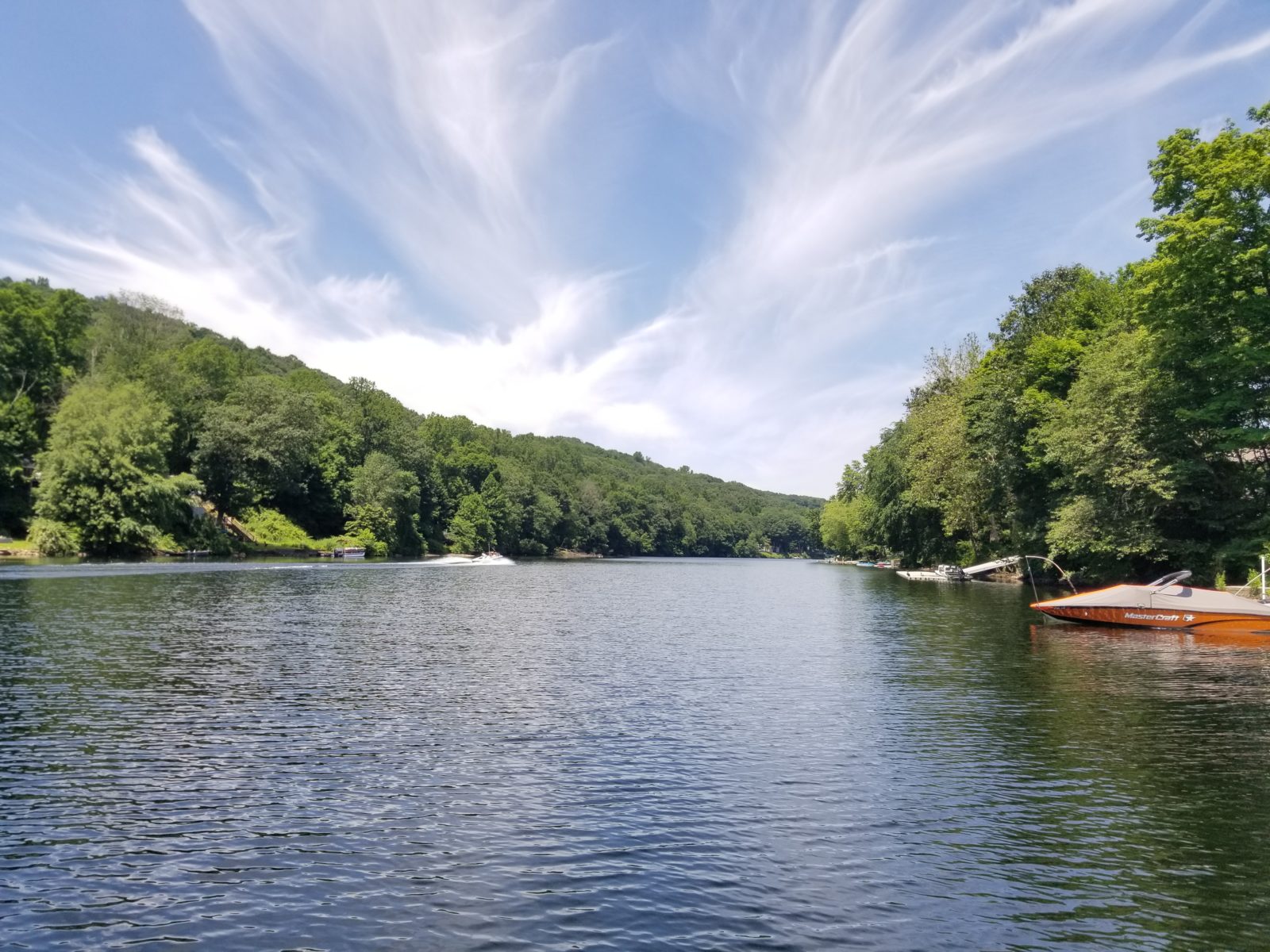Recommended Measures to Treat the Invasive Aquatic Weed, Hydrilla
July 18th, 2013
 In response to the recent news about the $500,000 per year cost to manage the 900 acre infestation of the invasive and dangerous aquatic weed, hydrilla, in Lake Waccamaw in North Carolina, and the potential risk that the plant spreads to other lakes, rivers and streams, SOLitude Lake Management recommends the following to lake owners and users to prevent the introduction and spread of hydrilla and to proactively identify this invasive aquatic weed:
In response to the recent news about the $500,000 per year cost to manage the 900 acre infestation of the invasive and dangerous aquatic weed, hydrilla, in Lake Waccamaw in North Carolina, and the potential risk that the plant spreads to other lakes, rivers and streams, SOLitude Lake Management recommends the following to lake owners and users to prevent the introduction and spread of hydrilla and to proactively identify this invasive aquatic weed:
- Boats and other recreational vehicles should be carefully inspected before introducing them to any lake after being in another body of water. Any remnant vegetation should be removed from the bottom of the boat and propellers before putting them in another lake or waterbody.
 Recreational users of any lake for fishing, boating, or swimming, should know what the hydrilla plant looks like. Any sighting should be reported to the lake’s management organization, the community association, appropriate local government officials, the state’s Division of Water Resources, Department of Agriculture, or local extension office.
Recreational users of any lake for fishing, boating, or swimming, should know what the hydrilla plant looks like. Any sighting should be reported to the lake’s management organization, the community association, appropriate local government officials, the state’s Division of Water Resources, Department of Agriculture, or local extension office.
Once introduced to a waterbody, hydrilla can reproduce and spread very rapidly. It is imperative that upon early detection, a treatment plan be implemented. SOLitude Lake Management recommends the following treatment options depending on the lake or waterbody’s overall goals:
- Treat the hydrilla with a systemic aquatic herbicide. To maintain aquatic balance, a slow acting, systemic herbicide can be applied in successive treatments over many seasons to control the hydrilla, while not affecting other vegetation.
- Stock sterile grass carp. Sterile grass carp have been proven to effectively consume hydrilla. However, they can also consume other beneficial vegetation, so their introduction to the waterbody should only be considered as one part of a multi-faceted approach to the overall Integrated Pest Management program for that waterbody. Grass carp stocking should also only be performed by professional fisheries biologists with the knowledge and experience to understand the proper stocking rates and obtain the appropriate state permits.
 “While there are effective ways to treat and control hydrilla, treatments can be costly and take many years to achieve success,” said Kevin Tucker, owner of SOLitude Lake Management. “Awareness and prevention are the best ways to maintain a hydrilla-free lake or waterbody.”
“While there are effective ways to treat and control hydrilla, treatments can be costly and take many years to achieve success,” said Kevin Tucker, owner of SOLitude Lake Management. “Awareness and prevention are the best ways to maintain a hydrilla-free lake or waterbody.”
Hydrilla should be managed quickly and effectively to mitigate the damage and danger it poses. It can crowd out native vegetation, interfere with drainage and irrigation canals, reduce the use of boat docks, launches and marinas, and interfere with public water supplies. Also, recreational activities such as fishing, boating, and swimming can become dangerous and sometimes prohibited if the hydrilla overwhelms a body of water.
Contact the experts at 888-480-5253 for all of your lake, pond and fisheries management needs.
Since 1998, SOLitude Lake Management has been committed to providing full service lake and pond management services that improve water quality, preserve natural resources, and reduce our environmental footprint. Services are available throughout the Eastern United States. Fisheries management consulting and aquatic products are available nationwide. Learn more about SOLitude Lake Management and purchase products at www.solitudelakemanagement.com.
PHOTO CREDITS: Sarah Miller, from SePRO Corporation, shows Hydrilla, an invasive aquatic weed, that has infested this water body to dangerous levels.










